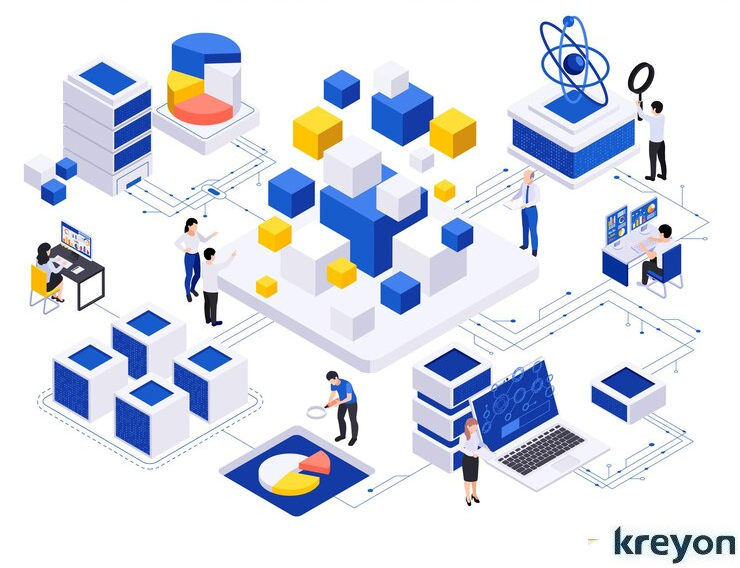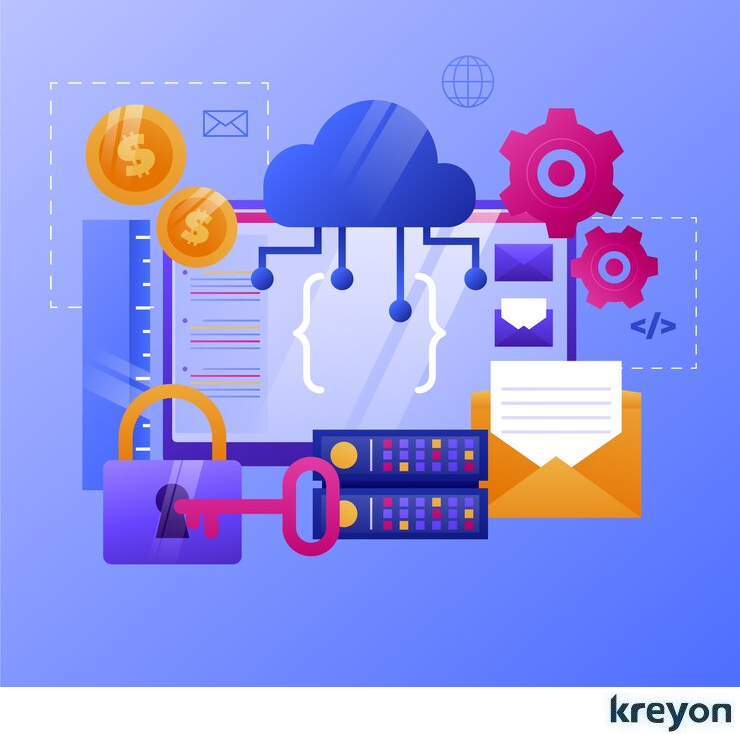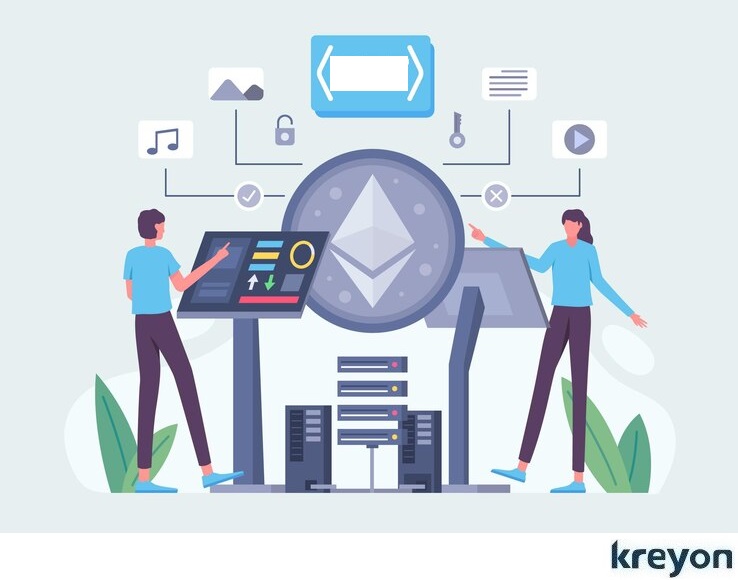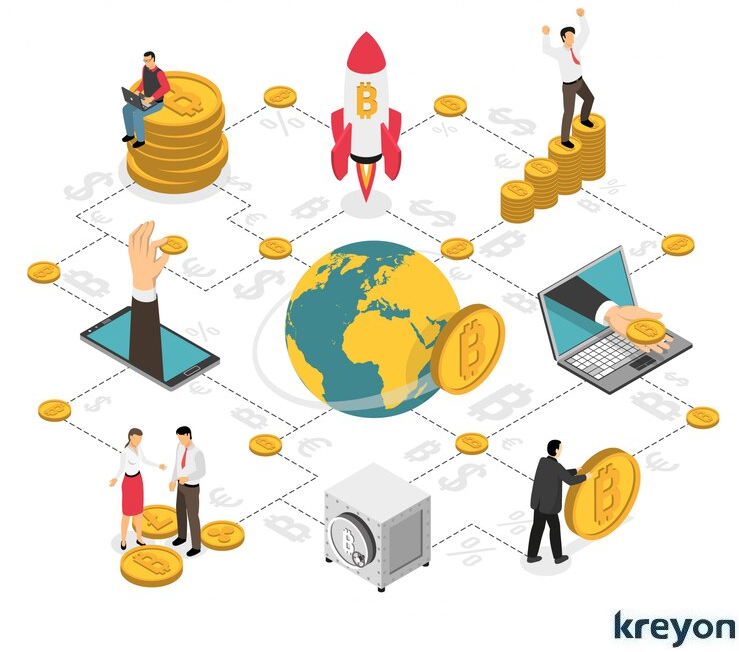Building Scalable AI Applications on Ethereum

The convergence of artificial intelligence (AI) and blockchain technology has the potential to revolutionize industries, redefine trust, and create new paradigms for innovation.
Ethereum, as one of the most prominent blockchain platforms, offers a decentralized, secure, and programmable environment for building applications.
When combined with AI, Ethereum can enable the creation of scalable, transparent, and autonomous systems that were previously unimaginable. However, building scalable AI applications on Ethereum comes with its own set of challenges and opportunities.
This article explores the key considerations, strategies for developing scalable AI applications on Ethereum blockchain.
The Intersection of AI and Ethereum
AI involves creating algorithms that can perform tasks that typically require human intelligence, such as learning, problem-solving, and decision-making.
Ethereum is a blockchain platform that enables smart contracts — self-executing contracts with the terms directly written into code, running on a decentralized network.
The synergy lies in Ethereum’s ability to provide a trustless environment for AI, where data integrity, algorithm transparency, and automated execution can be ensured.
AI excels at processing vast amounts of data, identifying patterns, and making predictions, while Ethereum provides a decentralized infrastructure for executing smart contracts and managing digital assets.
Together, they can create systems that are not only intelligent but also transparent, tamper-proof, and trustless.
For example, AI models can be deployed on Ethereum to automate decision-making processes, such as loan approvals, supply chain optimization, or fraud detection.
These models can operate within smart contracts, ensuring that their outputs are executed in a decentralized and verifiable manner. Additionally, Ethereum’s native cryptocurrency, Ether (ETH), can be used to incentivize data sharing, model training, and other collaborative efforts in AI ecosystems.
However, the integration of AI and Ethereum is not without challenges. Ethereum’s current limitations, such as scalability issues, high gas fees, and computational constraints, can hinder the development of AI applications.
To overcome these challenges, developers must adopt innovative strategies and leverage emerging technologies.
Challenges in Building AI Applications on Ethereum

Scalability Limitations: Ethereum’s blockchain is designed for security and decentralization, but these features come at the cost of scalability.
The network can process only a limited number of transactions per second (TPS), which is insufficient for AI applications that require real-time data processing and high throughput.
High Gas Fees: Executing complex computations on Ethereum can be expensive due to gas fees. AI models, particularly those involving deep learning, require significant computational resources, making them costly to run on-chain.
Computational Constraints: Ethereum’s virtual machine (EVM) is not optimized for the heavy computations required by AI algorithms. Running AI models directly on-chain is often impractical, necessitating off-chain solutions.
Data Privacy and Storage: AI models rely on large datasets for training and inference. Storing and accessing this data on Ethereum can be inefficient and costly, especially given the blockchain’s storage limitations.
Interoperability: AI applications often need to interact with external data sources, APIs, and other blockchains. Ensuring seamless interoperability while maintaining security and decentralization is a complex task.
Strategies for Building Scalable AI Applications on Ethereum
To address these challenges, developers can adopt the following strategies:
1. Layer 2 Scaling Solutions
Layer 2 solutions, such as rollups (Optimistic and zk-Rollups) and sidechains, can significantly enhance Ethereum’s scalability.
These solutions enable off-chain computation and data storage while maintaining the security and finality of the Ethereum mainnet. By leveraging Layer 2, AI applications can achieve higher throughput and lower gas fees, making them more practical for real-world use cases.
For example, an AI-powered decentralized finance (DeFi) application could use zk-Rollups to process thousands of transactions per second off-chain, with only the final state being recorded on Ethereum. This approach reduces costs and improves performance without compromising decentralization.
2. Hybrid On-Chain and Off-Chain Architectures
Running AI models entirely on-chain is often impractical due to Ethereum’s computational constraints. Instead, developers can adopt a hybrid architecture, where the AI model is trained and executed off-chain, while the results are verified and recorded on-chain.
For instance, an AI-based prediction market could train its models on centralized servers or decentralized compute networks (e.g., Golem or Akash). Once the model generates predictions, the results can be hashed and stored on Ethereum for transparency and immutability.
3. Decentralized Compute Networks

Decentralized compute networks, such as Golem, iExec, and SingularityNET, provide a distributed infrastructure for running AI models. These networks allow developers to offload computationally intensive tasks to a global network of nodes, reducing costs and improving scalability.
By integrating decentralized compute networks with Ethereum, developers can create AI applications that are both scalable and decentralized. For example, a decentralized AI marketplace could use Ethereum for payments and governance, while relying on a compute network for model execution.
4. Federated Learning and Edge Computing
Federated learning is a distributed approach to AI training, where models are trained locally on user devices rather than on a centralized server.
This approach enhances data privacy and reduces the need for large-scale data transfers, making it well-suited for blockchain-based applications.
By combining federated learning with edge computing, developers can build AI applications that are both scalable and privacy-preserving.
For example, a decentralized healthcare application could use federated learning to train AI models on patient data without compromising privacy, while Ethereum ensures the integrity and transparency of the process.
5. Tokenization and Incentive Mechanisms
Ethereum’s native token, Ether, and other ERC-20 tokens can be used to incentivize participation in AI ecosystems. For example, users can be rewarded with tokens for contributing data, training models, or providing computational resources.
Tokenization can also enable new business models for AI applications, such as data marketplaces and decentralized autonomous organizations (DAOs). By aligning incentives, developers can create self-sustaining ecosystems that drive innovation and scalability.
Future Possibilities for AI Applications on Ethereum

The integration of AI and Ethereum opens up a world of possibilities for decentralized intelligence. Here are some potential use cases:
Decentralized AI Marketplaces: Platforms where developers can buy, sell, and collaborate on AI models, with Ethereum ensuring transparency and fair compensation.
Autonomous Organizations: DAOs powered by AI algorithms that can make decisions, allocate resources, and optimize operations without human intervention.
AI-Driven DeFi: Intelligent financial products that use AI to analyze market trends, manage risk, and optimize returns, all executed on Ethereum.
Privacy-Preserving AI: Applications that use zero-knowledge proofs and federated learning to enable AI-driven insights without compromising user privacy.
Decentralized Identity and Reputation Systems: AI models that analyze user behavior and interactions to build decentralized identity and reputation systems, enhancing trust in blockchain ecosystems.
Conclusion
Building scalable AI applications on Ethereum is a complex but rewarding endeavor. By leveraging Layer 2 solutions, hybrid architectures, decentralized compute networks, and innovative incentive mechanisms, developers can overcome Ethereum’s limitations and unlock the full potential of decentralized intelligence.
As the Ethereum ecosystem continues to evolve, with upgrades like Ethereum 2.0 and advancements in AI technology, the possibilities for scalable AI applications will only grow.
The fusion of these two transformative technologies has the potential to create a new era of innovation, where intelligent systems operate transparently, autonomously, and at scale.
The future of AI on Ethereum is not just about building smarter applications—it’s about redefining how we interact with technology, data, and each other in a decentralized world.
Kreyon Systems is at the forefront of building decentralised AI apps, providing cutting-edge solutions for Ethereum blockchain. For any queries, please contact us.
